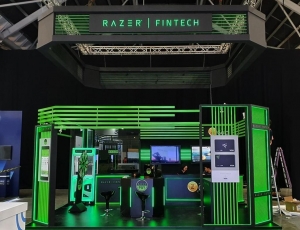According to a statement issued by Razer in early August, all Razer Pay payments will be suspended as of August 31, 2021. That means the end of all wallet top-up, payment and transfer features. The Razer Pay app will longer be downloadable as of October 1, 2021.
The Razer Card – a collaborative effort with Visa – is finished too. Less than 10 months old, the pre-paid card will no longer be usable after September 30, 2021.
Razer can be forgiven for having high hopes for its fintech arm. Its Singaporean counterpart Sea Group – which began as a gaming company – is enjoying considerable success with the tripartite whammy of gaming, e-commerce and fintech. In fact, Sea won a digital bank license in Singapore and acquired Bank BKE in Indonesia, which it will convert into a digital lender. Sea also is believed to be one of the more competitive applicants for a digital banking license in Malaysia.
In Razer’s case, despite the company’s considerable digibanking ambitions, which included Razer Youth Bank (a global digibanks for young millennials and Gen Zers), it never carved out a strong niche in a crowded market space. Both Singapore and Malaysia have dozens of e-wallets, with little to distinguish them besides the cashback flavor of the moment; hence the importance of having a strong ecosystem, like Sea and Grab do. While Razer could feed users from its gaming business into its e-wallet, the company appears to not have been able to expand that user base sufficiently.
As far as fintech gambits go, Razer’s was quite short-lived, lasting just over 3 years in Malaysia and about 2.5 in Singapore. At the time of the March 2019 Singapore launch, Razer CEO Tan Min-Liang said that Razer Pay was already one of Malaysia’s largest e-wallets. It is hard to know how he made that estimate. Regardless of its accuracy, Razer Pay has not had staying power in either its home market or Singapore.
In retrospect, the failure to win a Singapore digital bank license may have signaled the beginning of the end for Razer’s Youth Bank dreams. A win in Singapore would have signaled that Razer was legit as a digibank and could have augured well for its prospects in Malaysia. Alas, it was not to be.
Razer’s decision to retire Razer Pay now could signify a pivot back to its core gaming business, which has grown expeditiously during the long Covid-19 pandemic and the gradual normalization of working from home and staying home. In the year ended December 2020, Razer posted a net profit of US$5.6 million, a significant improvement over a loss of US$84.2 million in 2019 and its first ever year out of the red.
Although Razer’s financial services revenue grew almost 67% to reach US$128 million in 2020, it was still just a fraction of gaming hardware revenue, which remains Razer’s bread and butter. The company’s revenue from that segment rose about 52% to US$1.08 billion last year.

